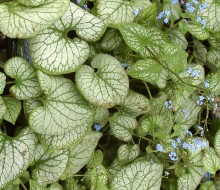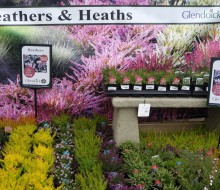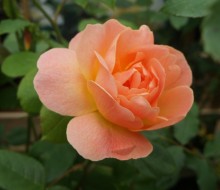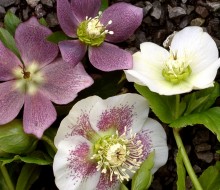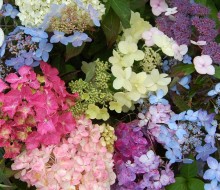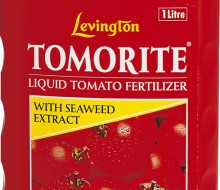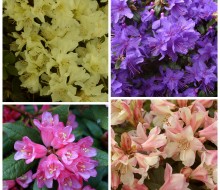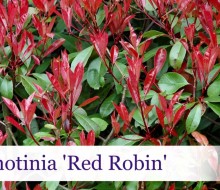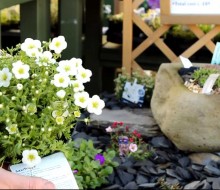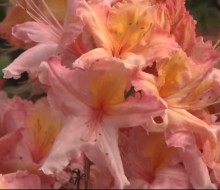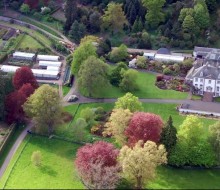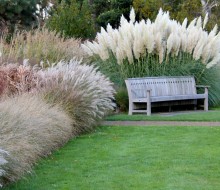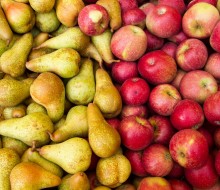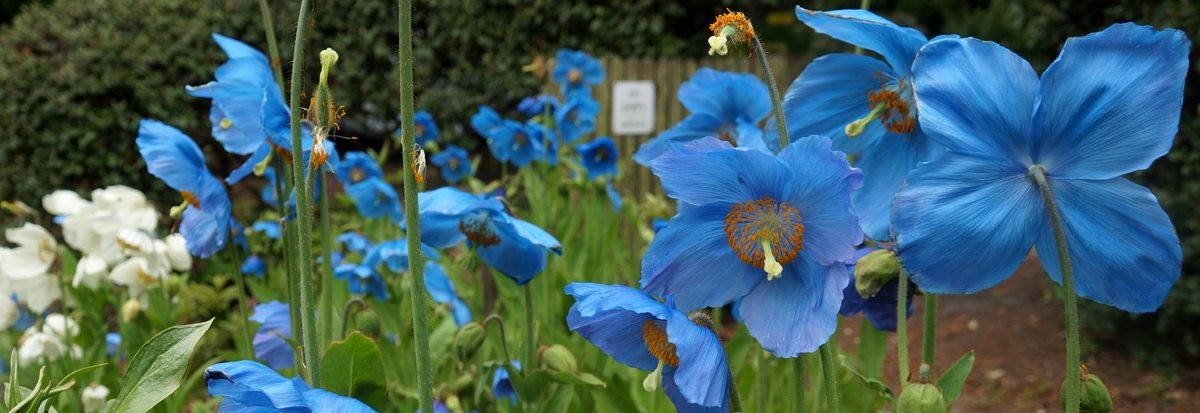

A feature of many Scottish Gardens, the blue poppies are quite easy in moist soil, rich in organic matter which is not allowed to dry out. Seed raised Meconopsis are best planted in clumps or groups of 3-5 or more of the same which ensures a plentiful supply of fertile seed.
Divide congested clumps in spring or autumn every few years.
The infertile named forms cannot be grown from seed and need to be propagated from divisions.
MECONOPSIS Baileyi (betonicifolia) H4 The best known blue poppy. Rich blue flowers in June. ALBA The fine pure white form which comes almost 100% true from seed if kept isolated from the blue forms. HENSOL VIOLET Striking violet-purple, comes true from seed if kept isolated.
MECONOPSIS grandis Large deep blue-purple flowers in May. The rarely offered wild species. Amazing colour. Earlier flowering than the other blue poppies.
MECONOPSIS Lingholm (x sheldonii) H4 Spectacular large flowers, a gorgeous blue. Comes true from seed.

Grown from divisions. Each year we should have limited numbers of several forms:
MECONOPSIS 'Ascreavie' (Infertile Blue Group) Huge blue-purple flowers 4-5 per stem. (L&S 600 seed.) A selection from the famous Sherriff garden. Divisions from clumps in our garden.
MECONOPSIS 'Crarae' (Infertile Blue Group) Huge pale blue flowers with near circular petals. Divisions from clumps in our garden. One of the quickest to bulk up and increase.
MECONOPSIS 'Huntfield' (George Sherriff Group) Huge blue flowers on taller than average stems. Good colour. Divisions from clumps in our garden.
MECONOPSIS 'Louise' (Lingholme selection) Huge pale blue flowers on tall stems in June. Divisions from clumps in our garden. This is a selection of Lingholm with large pale blue flowers
MECONOPSIS 'Marit' (divisions) selection from Tromso with cream flowers, like a cream-white x  Sheldonii. The finest of this shade.
Sheldonii. The finest of this shade.
MECONOPSIS 'Mervin Kessell' (Infertile Blue Group) Huge blue flowers on tall stems in June. Divisions from clumps in our garden. Glendoick held Meconopsis trials and selected the best performers for propagation.
MECONOPSIS 'Mophead'  (Fertile Blue Group) Huge blue flowers on tall stems in May Divisions from clumps in our garden. Useful for early flowering. Produces some fertile seed.
(Fertile Blue Group) Huge blue flowers on tall stems in May Divisions from clumps in our garden. Useful for early flowering. Produces some fertile seed.
MECONOPSIS 'Mrs Jebb' Intense blue cup shaped flowers, forming dense clumps. Divisions. One of the most distinctive forms with a different flower shape.
MECONOPSIS 'PC Abildgaard' (Infertile Blue Group) Huge blue flowers on tall stems in June. Divisions from clumps in our garden. A Danish selection similar to Slieve Donard.
MECONOPSIS 'Slieve Donard' (Infertile Blue Group) One of the finest blue selections. Vigorous and easy. Divisions.
Meconopsis nepalensis hybrids monocarpic, mixed yellows, reds and pinks. Lovely rosettes producing tall spikes. Long flowering season. Easy to raise from seed. Appreciates fertiliser.Die after flowering. Some take a year or two to flower. Species can be kept going by collecting and sowing seed.
MECONOPSIS paniculata Monocarpic Masses of yellow flowers. From a new area: Tawang, Arunachal Pradesh.
MECONOPSIS superba Huge silvery rosettes, beautiful large white flowers. Rarely offered. May take a few years to flower. May need covering in winter in cold, wet gardens

MECONOPSIS x cookei ‘Old Rose' Fine, easily grown hybrid between M. punicea and quintuplinerva. Rich reddish-purple on long thin stems. Perennial and easier than either parent.
MECONOPSIS villosa (Cathcartia villosa) A perennial with yellow flowers over several weeks and distinctive foliage. Be careful when planting as roots are very delicate.
 How to grow Meconopsis
How to grow Meconopsis .
.
.
